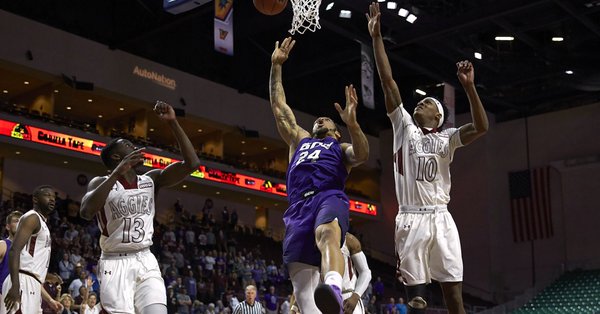By Kaelen Jones
The end of the 2017 NCAA Tournament caps a great run for University of Phoenix Stadium. In a 26-month span, the 10-year-old venue has played host to the Pro Bowl, Super Bowl, College Football Championship, and Final Four, incurring a combined economic impact said to have reached $1.5 billion.
Unprecedented 26-month run for @UOPXStadium w Pro Bowl/Super Bowl/College Football Chmshp/#FinalFour. Combined economic impact: $1.5 Billion pic.twitter.com/qV6gVliXIg
— Mark Dalton (@CardsMarkD) April 1, 2017
Jerry Colangelo, Managing Director of USA Basketball, said during a recent interview with Sports360AZ.com’s Brad Cesmat that he’s heard “mostly very, very positive” reviews of the Phoenix Final Four, the first-ever men’s basketball NCAA Tournament final and semifinals held in Arizona.
One Shining Phoenix.
Thank you PHX! pic.twitter.com/f56naXvLtZ
— Final Four Phoenix (@FinalFour) April 4, 2017
He added that the Valley’s now-established track record hosting major sporting events is valuable in attaining future competitions.
“That really speaks well for our marketplace,” Colangelo said, “and our ability to host and do a good job.”
With other western locales such as Los Angeles and Las Vegas set to erect brand-new sports facilities in the near future, Phoenix will have viable opposition to compete with to host events in the future. Colangelo says that times have changed, and now the lifespan of stadiums has lowered from 50 years to 25, thanks to the fast-development of technology and its necessary incorporation at facilities.
“You have to ‘keep up with the Joneses’ to some degree with facilities in order to compete for events,” Colangelo said. “It will become more competitive as we move forward.”
Advantages between venues differ. Colangelo noted that Los Angeles’s new football stadium will be open-aired, meaning it won’t likely be considered to host a basketball tournament. However, the proximity of the city’s infrastructure and points of attraction gives it in an advantage over Phoenix, as this year’s games were played in Glendale while sponsored events took place in Phoenix roughly 10 miles away.
A look ahead to next year’s NCAA Tournament host city suggests the league isn’t too concerned with the distance between the game site and its fan-centric activities.
“As far as distances are concerned, I don’t buy that,” Colangelo said. “Because if you were in Houston (Super Bowl LI) or Dallas (College Football Playoff), it was a lot further — a lot further — between the hotels and the center of action, if you will, and the stadium. So that’s not something I would worry about.”
“I think San Antonio (2018 Men’s Final Four) next year doesn’t have anywhere near the facility to host, but they have a unique situation. You walk everywhere, to the stadium, … the Riverwalk, and hotels and restaurants, and it’s a great place to host. But they’re in the rotation. What we’re seeking is for our market to be in the rotation.”
After a strong showing in 2017, the case for Phoenix to be included within the NCAA Tournament’s rotation shouldn’t be out of the question, especially when considering the league’s goals.
“Think about it: 18,000 seats (in a standard college basketball arena) versus 70,000 seats (in a stadium),” Colangelo, a former four-time NBA Executive of the Year expained. “That’s what the NCAA wants to do and that is to play in these large stadiums. Look at what they do in terms of draw and numbers and dollars and stadiums. For the NCAA the big money-maker by far and away is the Final Four. And so there’s a lot riding on success, and they need the capacity, and they need a lot of things going for them to pay the bills.”
Perhaps that’s a good sign for the Valley and its hopes of hosting the Big Dance some time down the road.
Related posts:

Grand Canyon University head coach Dan Majerle reacts after a play as Grand Canyon University faces off against CSU Bakersfield on Thursday, Jan. 28, 2016, at Grand Canyon University in Phoenix, Ariz. Grand Canyon University defeated CSU Bakersfield 70-64.
Colangelo: Lopes Thriving Under Majerle’s Guidance Draft Time For Gonzos’ Son , GCU Surprise, Rising FC Expanding?
Draft Time For Gonzos’ Son , GCU Surprise, Rising FC Expanding?
 Survive and Advance: ‘Lopes Get First WAC Tourney Win
Survive and Advance: ‘Lopes Get First WAC Tourney Win
 ‘Lopes Come Up Short in WAC Title Game
‘Lopes Come Up Short in WAC Title Game

